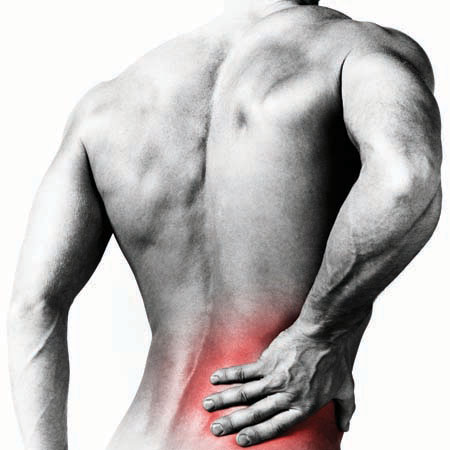Awkward positions, distractions and fatigue may trigger low back pain
New research reveals the physical and psychosocial factors that significantly increase the risk of low back pain onset. In fact results published in Arthritis Care & Research, a journal of the American College of Rheumatology (ACR), show that being engaged in manual tasks involving awkward positions will increase the risk of low back pain by eight times. Those who are distracted during activities or fatigued also significantly increase their risk of acute low back pain.
At some point, nearly 10% of the world’s population experience back pain, which is the leading cause of disability according to the World Health Organization (WHO) Global Burden of Disease report (2010). WHO reports that low back pain has a greater impact on global health than malaria, diabetes, or lung cancer; yet little progress has been made to identify effective prevention strategies.
“Understanding which risk factors contribute to back pain and controlling exposure to these risks is an important first step in prevention,” explains Associate Professor Manuela Ferreira, Ph.D., with The George Institute for Global Health and Sydney Medical School at The University of Sydney in New South Wales, Australia. “Our study is the first to examine brief exposure to a range of modifiable triggers for an acute episode of low back pain.”
For this case-crossover study, researchers recruited 999 participants from 300 primary care clinics in Sydney, Australia, who had an acute low back pain episode between October 2011 and November 2012. Study subjects were asked to report exposure to 12 physical or psychosocial factors in the 96 hours prior to the onset of back pain.
The risk of a new episode of low back pain significantly increased due to a range of triggers, from an odds ratio of 2.7 for moderate to vigorous physical activity to 25.0 for distraction during an activity. Researchers found that age moderated the effect of exposure to heavy loads, with odds ratio for individuals 20, 40, or 60 years of age at 13.6, 6.0, and 2.7, respectively. A new finding not reported previously was that back pain risk was highest between 7:00 a.m. and noon.
 “Understanding which modifiable risk factors lead to low back pain is an important step toward controlling a condition that affects so many worldwide,” concludes A/Prof Ferreira. “Our findings enhance knowledge of low back pain triggers and will assist the development of new prevention programs that can reduce suffering from this potentially disabling condition.”
“Understanding which modifiable risk factors lead to low back pain is an important step toward controlling a condition that affects so many worldwide,” concludes A/Prof Ferreira. “Our findings enhance knowledge of low back pain triggers and will assist the development of new prevention programs that can reduce suffering from this potentially disabling condition.”
###
This study is published in Arthritis Care & Research. Media wishing to receive a PDF of this article may contact .(JavaScript must be enabled to view this email address).
Full citation: “What Tiggers an Episode of Acute Low Back Pain? A case-crossover study.” Daniel Steffens, Manuela L Ferreira, Jane Latimer, Paulo H Ferreira, Bart W Koes, Fiona Blyth, Qiang Li, Christopher G Maher. Arthritis Care and Research; Published Online: February 9, 2015 (DOI: 10.1002/acr.22533).
Author Contact: To arrange an interview with Dr. Ferreira, please contact Maya Kay at .(JavaScript must be enabled to view this email address).
About the Journal
Arthritis Care & Research is an official journal of the American College of Rheumatology (ACR), and the Association of Rheumatology Health Professionals (ARHP), a division of the College. Arthritis Care & Research is a peer-reviewed journal that publishes both original research and review articles that promote excellence in the clinical practice of rheumatology. Relevant to the care of individuals with arthritis and related disorders, major topics are evidence-based practice studies, clinical problems, practice guidelines, health care economics, health care policy, educational, social, and public health issues, and future trends in rheumatology practice. The journal is published by Wiley on behalf of the ACR.
About Wiley
Wiley is a global provider of content-enabled solutions that improve outcomes in research, education, and professional practice. Our core businesses produce scientific, technical, medical, and scholarly journals, reference works, books, database services, and advertising; professional books, subscription products, certification and training services and online applications; and education content and services including integrated online teaching and learning resources for undergraduate and graduate students and lifelong learners.
Founded in 1807, John Wiley & Sons, Inc. (NYSE: JWa, JWb), has been a valued source of information and understanding for more than 200 years, helping people around the world meet their needs and fulfill their aspirations. Wiley and its acquired companies have published the works of more than 450 Nobel laureates in all categories: Literature, Economics, Physiology or Medicine, Physics, Chemistry, and Peace. Wiley’s global headquarters are located in Hoboken, New Jersey, with operations in the U.S., Europe, Asia, Canada, and Australia.
###